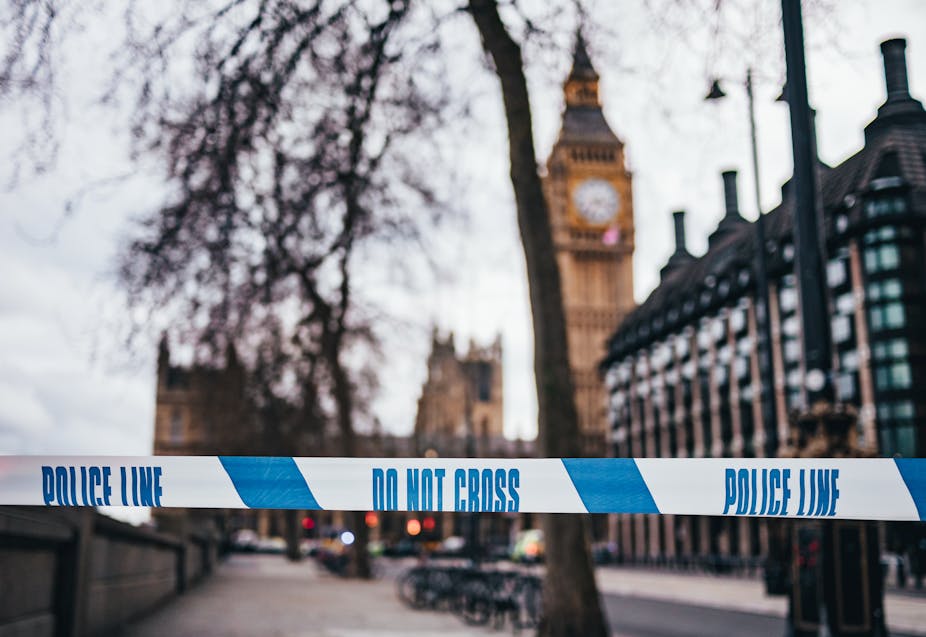The latest crime figures from the Office for National Statistics (ONS) offer a grim outlook on the state of criminal justice in England and Wales. Almost as if to head off criticism, the bulletin starts: “Over recent decades, we’ve seen continued falls in overall levels of crime but in the last year the trend has been more stable”. Isn’t that an odd way of introducing a rise in serious violent offences?
Police recorded that offences involving knives or sharp instruments are up by 12%. There’s been a concerning increase in the number of admissions to hospital in England for assaults involving a sharp instrument (up 15%), and the number of homicides continues to rise for a fourth consecutive year, following a period of long-term decline.
As is often the case, much of the discussion of these statistics will focus on policing. Commentators seem to assume that there is a stable population of committed criminals, who are either enabled or dissuaded by the actions of the police. In fact, the activities, policies and strategies adopted by the police play only a small role in determining the extent of crime in England and Wales.
Deep cuts
Of course, it’s fair to ask whether cuts to police budgets might have caused an increase in violent crime on the streets. But this loses sight of a much bigger picture – which comes into focus once you look behind the figures – at the state of the nation’s criminal justice system under austerity.
Prisons are in chaos, facing increased infiltration by organised crime and rising levels of violence, alongside a synthetic drugs crisis which is causing preventable deaths behind bars. From 2009-10 to 2016-17, the number of operational staff in public prisons was reduced by 30%, to manage with cuts to the Ministry of Justice budget (projected to reach 40% by 2019-20).
The partial privatisation of probation services – ushered through in 2014 by the justice secretary at the time Chris Grayling as a means of driving better efficiency – has been labelled a “mess” by the House of Commons Justice Committee.
Police have become the service of first and last resort to deal with the consequences of the government’s policy of austerity, which has involved swingeing cuts to social care, mental health and youth services, as well as local government.
The scourges of knife crime and county lines (where urban gangs exploit young people as drug runners to sell in regional towns) are linked in complex but well-evidenced ways to the lack of support, services and opportunities available to vulnerable young people – especially those from black and minority ethnic communities.
The challenges that police face in the digital age should not be underestimated. The Metropolitan Police alone undertake forensic examination of 40,000 digital devices annually, consuming the time of overworked detectives – even as their numbers are dwindling, due to budget cuts and problems with recruitment.
And in 2017, the police watchdog – Her Majesty’s Inspectorate of Constabulary – uncovered further “dangerous” and “disturbing” practices, which compromised investigations and let down victims, as a direct result of budget cuts driven by the policy of austerity.
The real victims
In a large survey such as the Crime Survey for England and Wales (from which the ONS draws some of its crime data), it is very difficult to fully account for those marginalised and hidden populations who are most likely to experience violence regularly. But even though the figures we see today are inevitably a poor reflection of the real extent of crime, we still know who is suffering most from the worst effects of serious violence.
It’s the poorest: they are both the main offenders, and the victims.
In Britain today it is possible to visit many neighbourhoods strewn with crime problems. It is also possible to visit places that, at least on the surface of things, experience almost no crime whatsoever. Crime is an everyday reality for some people. For others – especially those able to afford additional security measures – it hardly intrudes at all.
And yet there are some activities that are powerfully corrosive to our collective and individual safety, welfare and interests which remain entirely legal. Tax avoidance, for example, results in governments allocating less money to schools, roads, hospitals, prisons, universities and so on.
The NHS – which is supposedly protected from austerity – has been in a protracted funding crisis. An analysis published in the Journal of the Royal Society of Medicine estimates that 30,000 people die unnecessarily every year because of the cuts to NHS and to local authority social care budgets – but we won’t see that in the crime figures.
Meanwhile, the government’s botched roll-out of Universal Credit has been devastating for the welfare of the poorest in society.
It is perfectly clear that the failure to provide adequate resources for the welfare state produces a broad range of deleterious and damaging social effects. Yet neoliberal economic policy continues to position the poor as the main debt burden, even as they pay the greatest costs of austerity.
Ending austerity could mean restoring our system of social protection and restoring the spending power of local authorities and investment in criminal justice and social welfare. The latest crime statistics reinforce what experts have been finding for years: that the best way to stop the worsening violence on our streets is to end the violence of austerity.

